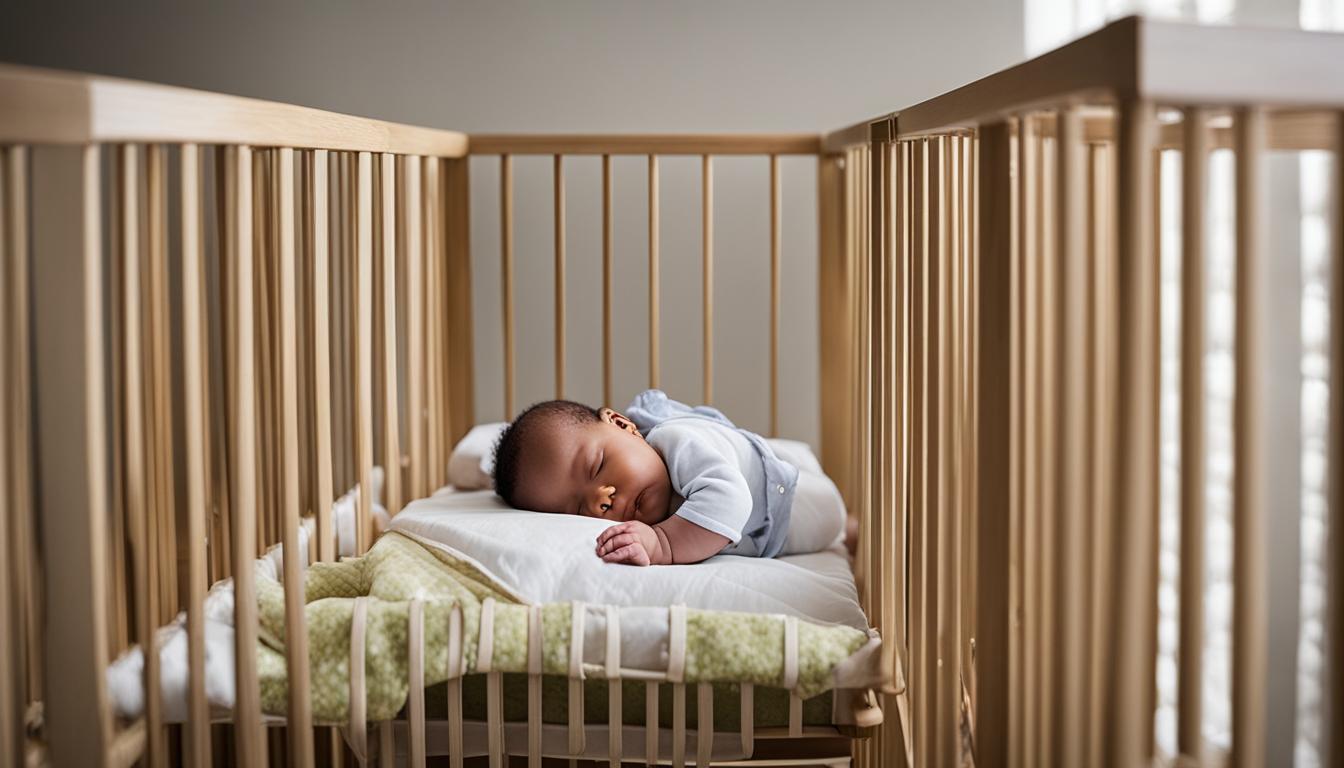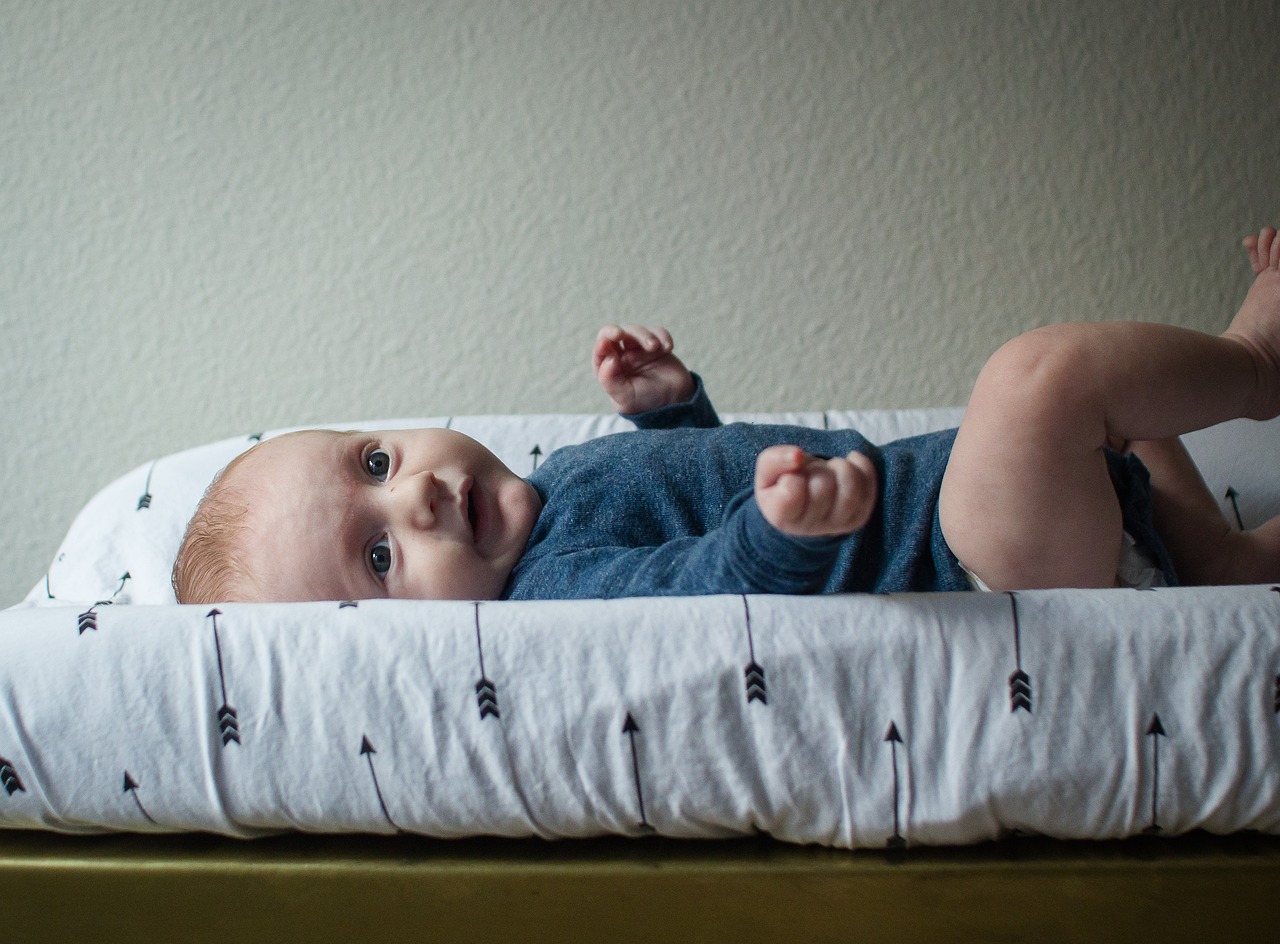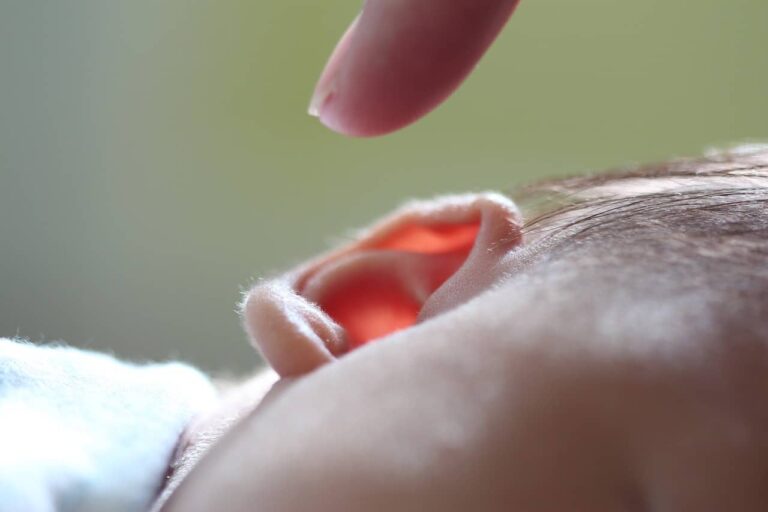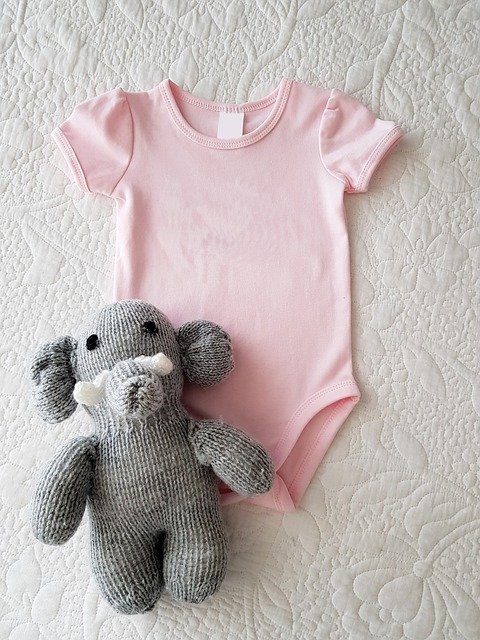Crib Time Limits for Awake Babies – Tips & Info
Are you giving your baby enough time to play in their crib? While it may seem harmless, excessive crib time can actually disrupt your baby’s sleep patterns and even affect their development. In this article, we’ll explore the importance of finding the right balance and how to establish healthy sleep routines for your little one.
Key Takeaways:
- Limit downtime in the crib to 20-30 minutes before naps and 30 minutes before bedtime.
- Excessive crib time can lead to shorter naps and more frequent night-wakings.
- Prolonged periods of lying on their back in the crib can cause a flat head shape.
- Allowing your baby some independent playtime in the crib can be beneficial.
- Understanding your baby’s wake windows can help establish a more structured sleep routine.
Is it okay to leave a baby alone in the crib?
When it comes to independent playtime in the crib, it can be a positive experience for your baby, as long as they are comfortable and not upset. Independent playtime allows your little one to develop their cognitive and motor skills while also providing them with a sense of relaxation and security.
Independent playtime helps babies explore their surroundings, engage with their toys, and learn to entertain themselves.
However, it’s crucial to gauge your baby’s reactions and ensure they are not crying or distressed during this time. Every baby is different, so understanding your little one’s needs and preferences is essential when establishing their sleep routines.
Spending time alone in the crib can help your baby build confidence and a sense of independence, which is beneficial for their overall development.
It’s important to strike a balance and avoid excessive downtime in the crib. While some babies may enjoy their alone time, it’s essential to monitor their reactions and avoid prolonged periods of crib play. Too much crib time can interfere with sleep patterns and potentially disrupt nap times and nighttime sleep.
Creating a consistent schedule that includes independent playtime in the crib, along with other activities, can help establish healthy sleep routines for your baby.
Remember, each baby is unique, so what works for one may not work for another. Pay attention to your baby’s cues and adapt your approach accordingly. By providing your baby with the right balance of independent playtime and attention, you can promote their healthy development and ensure a peaceful and restful sleep.
| The Benefits of Independent Playtime in the Crib | Tips for Establishing Healthy Sleep Routines |
|---|---|
|
|
Understanding wake windows for babies
Understanding wake windows is essential when it comes to managing baby sleep disruptions and establishing sleep routines. Wake windows refer to the amount of time your baby or toddler stays awake between naps. By carefully monitoring your baby’s wake windows, you can optimize their sleep schedule, help them fall asleep more easily, and promote healthier sleep patterns.
When determining the appropriate wake window for your baby, it’s important to consider various factors such as age, hunger cues, and tiredness levels. Every baby is different, so you’ll need to pay attention to their individual needs and adjust their sleep schedule accordingly. As your baby grows, their wake windows will increase, meaning they will be able to stay awake for longer periods between naps.
By creating a structured sleep routine based on your baby’s wake windows, you can establish consistency, which is key for promoting healthy sleep habits. This routine can include activities such as a calming pre-sleep routine, such as reading a story or singing a lullaby, to signal to your baby that it’s time to wind down and prepare for sleep.
Additionally, understanding wake windows can aid in sleep training methods for babies. By aligning sleep training with your baby’s wake windows, you can optimize their ability to learn to fall asleep independently and establish a reliable sleep routine.
“Understanding your baby’s wake windows can help them fall asleep more easily and have longer, more restful sleep.”
Sample Wake Window Chart
| Age | Average Wake Window |
|---|---|
| Newborn (0-2 months) | 45 minutes – 1.5 hours |
| 3-4 months | 1-2 hours |
| 5-6 months | 2-3 hours |
| 7-8 months | 2.5-4 hours |
| 9-12 months | 3-4.5 hours |
Tips for introducing the crib to your baby
Introducing the crib to your baby is an important step in creating a sleep-friendly environment and managing baby sleep disruptions. To help your little one feel comfortable and familiar with their sleep space, it’s best to take a gradual approach.
Start by incorporating daily playtime in the crib for short periods, around 5-10 minutes, to create positive associations with the crib. This can help your baby view the crib as a happy and enjoyable place. You can sing songs, play games, or introduce their favorite toys during this time to make it even more engaging.
Remember, babies are adaptable and take time to get accustomed to new experiences. By being patient and giving them space to explore and play in the crib, you’ll be nurturing their sense of security and building a positive connection with their sleep environment.
In addition to playtime, it’s beneficial to practice short periods of leaving your baby in the crib. This can help them feel secure and build confidence in sleeping independently. Start with a few minutes and gradually increase the duration as your baby becomes more comfortable.
By gradually introducing the crib and making it a pleasant and safe space, you’re creating an environment conducive to better sleep. This will not only benefit your baby but also allow you to manage any sleep disruptions more effectively.
Tips for introducing the crib to your baby:
- Incorporate daily playtime in the crib for short periods, around 5-10 minutes.
- Sing songs, play games, or introduce toys to create positive associations.
- Practice short periods of leaving your baby in the crib to build confidence in sleeping independently.
- Gradually increase the duration of crib time as your baby becomes more comfortable.
By following these tips, you can create a sleep-friendly environment for your baby and establish healthy sleep habits.
Now, let’s take a look at some valuable insights about managing baby sleep disruptions and creating a sleep routine that works for your little one.
Reasons why a baby may not sleep in the crib
Managing baby sleep disruptions and establishing sleep routines can be a challenging task. One common struggle parents face is getting their baby to sleep in the crib. There can be several reasons why a baby may resist sleeping in the crib, and understanding these reasons is key to addressing the issue effectively.
- Separation anxiety: Babies may experience separation anxiety, especially when they are transitioning to a new sleep environment. They may feel more secure and comfortable when they are close to their parents.
- Teething: Teething can cause discomfort and pain, making it difficult for babies to settle down and sleep. They may seek additional comfort or soothing, which they may associate with falling asleep in their parents’ arms.
- Illness: When babies are sick or not feeling well, they may have difficulty sleeping in the crib. The discomfort from illness can make them seek extra comfort and proximity to their parents for reassurance.
- Sleep regression: Sleep regression is a common occurrence during certain developmental stages. Babies may experience temporary disruptions in their sleep patterns, making it challenging for them to settle in the crib. They may require more soothing or attention to fall asleep.
- Familiar sleep environment: Babies can become accustomed to falling asleep in their parents’ arms or in other sleep environments. Transitioning them to the crib may disrupt their usual routine and cause resistance.
Addressing these reasons requires patience and understanding. Creating a calm and soothing sleep routine can help your baby feel safe and secure in the crib. Providing reassurance, comfort, and establishing consistent sleep patterns can gradually help your baby adjust to sleeping in the crib.
Quote:
“Understanding the underlying cause of your baby’s resistance to the crib can help you address it effectively.”
| Reasons why a baby may not sleep in the crib | Strategies for overcoming the challenge |
|---|---|
| Separation anxiety | Gradually introduce the crib, provide reassurance, and establish a consistent sleep routine. |
| Teething | Offer teething toys, provide comfort measures, and maintain a soothing bedtime routine. |
| Illness | Monitor your baby’s health, provide extra comfort, and consult a pediatrician if necessary. |
| Sleep regression | Be patient, offer additional soothing, and maintain consistent sleep habits. |
| Familiar sleep environment | Gradually transition your baby to the crib, use comfort items, and establish a calming sleep routine. |
Strategies to help your baby sleep in the crib
When it comes to helping your baby sleep in the crib, there are several strategies you can try. By implementing these techniques, you can promote better sleep for your little one and manage any disruptions that may arise. Here are some effective strategies to consider:
Establish a Consistent Bedtime Routine
A consistent bedtime routine is essential for setting the stage for a peaceful night’s sleep. Incorporate activities like bath time, reading books, or lulling your baby with soothing lullabies. By following the same routine every night, your baby will learn to associate these activities with winding down for sleep.
Create a Sleep-Friendly Environment
The environment in the crib plays a crucial role in your baby’s sleep. Ensure the bedding is soft and comfortable, and the room is dark and quiet. Maintaining a comfortable temperature is also important, as an overly warm or cold environment can disrupt your baby’s sleep.
Gentle Sleep Training Methods
Sleep training methods can be effective in teaching your baby to fall asleep independently in the crib. The pick-up-put-down method and the fading method are gentle approaches that can help your baby transition to sleeping in the crib. These methods involve gradually reducing your involvement in soothing your baby to sleep and providing encouragement and reassurance along the way.
| Sleep Training Method | Description |
|---|---|
| Pick-up-Put-Down | With this method, you pick up your baby when they become upset and put them back down once they calm down. Repeat this process until your baby falls asleep on their own. |
| Fading | The fading method involves gradually reducing your presence in the room while your baby falls asleep. Start by sitting closer to the crib and gradually move further away each night. |
Remember, consistency and patience are key when implementing these sleep training methods. It may take time for your baby to adjust, but with persistence, they will become more comfortable sleeping in the crib.
By following these strategies, you can help your baby establish healthy sleep habits and manage any sleep disruptions that may occur along the way.
Transitioning from crib to bed
Transitioning from a crib to a bed is an important milestone in your child’s sleep journey. Typically, this transition occurs when your child is around 2-3 years old and has outgrown the crib or shows signs of attempting to climb out. Moving your child to a bed should be done gradually to ensure they feel secure and comfortable in their new sleep environment.
To ease the transition, consider introducing a toddler bed or a mattress on the floor as a first step. These options provide a sense of familiarity while offering a safe and accessible sleep space for your child. Maintain a consistent bedtime routine to provide comfort and stability during this period of change.
It is essential to monitor your child’s behavior and sleep patterns during the transition from crib to bed. Some children may experience temporary disruptions in their sleep, such as increased night-wakings or difficulties falling asleep. This is normal as they adjust to the new sleep environment and routine. Provide reassurance and support as needed to help them feel at ease.
Every child is unique, so it’s important to pay attention to their readiness and comfort level before transitioning from the crib to a bed. Some children may express excitement about the transition and adapt quickly, while others may need more time and support. Take cues from your child’s actions and emotions to ensure a smooth and successful transition.
| Transitioning Tips | Benefits |
|---|---|
| Introduce a toddler bed or mattress on the floor | Offers a safe and accessible sleep space |
| Maintain a consistent bedtime routine | Provides comfort and stability during the transition |
| Monitor your child’s behavior and sleep patterns | Identify and address any disruptions or concerns |
| Provide reassurance and support as needed | Helps your child feel secure and comfortable |
Patience and practice in getting your baby to sleep in the crib
Getting your baby to sleep in the crib can be a challenging process that requires patience and practice. It is completely normal for babies to resist changes in their sleep routine initially, but with consistent effort, you can help them adjust and establish healthier sleep patterns.
Managing baby sleep disruptions and establishing sleep routines are key aspects of getting your baby to sleep in the crib. By following these tips, you can create a positive sleep environment that encourages your baby to feel safe and secure in their crib.
First and foremost, it is essential to follow a structured sleep schedule. Babies thrive on routine, so establishing consistent nap and bedtime schedules can help regulate their internal sleep-wake rhythms. Stick to a regular wake-up time, nap schedule, and bedtime routine to signal to your baby that it is time to sleep.
Next, establish a calm bedtime routine that prepares your baby for sleep. This can include activities such as a warm bath, gentle massage, reading a bedtime story, or soothing lullabies. By creating a familiar routine, you can help your baby relax and associate it with sleep time.
Creating a safe and soothing sleep environment in the crib is also crucial. Ensure that the crib meets safety standards and is free from any potential hazards. Use a firm mattress, fitted crib sheet, and avoid placing any unnecessary items in the crib. Keep the room dark, quiet, and at a comfortable temperature to promote optimal sleep conditions.
“Consistency is key in helping your baby adjust to sleeping in the crib. Remember that it may take time for them to feel comfortable in this new sleep environment.”
It is important to gently expose your baby to the crib and provide opportunities for them to fall asleep in it. Start by incorporating short periods of crib time during awake hours, allowing your baby to explore and play while supervised. This will help them become familiar with the crib and associate it with positive experiences.
During the bedtime routine, place your baby in the crib while drowsy but still awake. This allows them to learn how to self-soothe and fall asleep independently. If they become fussy, offer gentle reassurance and comfort without picking them up. Over time, they will learn to associate the crib with sleep and develop self-soothing skills.
Remember, every baby is unique and may require different strategies to adjust to sleeping in the crib. Be patient, consistent, and adapt your approach as needed. With practice and perseverance, your baby will become more comfortable sleeping in the crib, allowing for peaceful nights and restful sleep for the whole family.
Table: Practices to Help Your Baby Sleep in the Crib
| Practice | Description |
|---|---|
| Follow a structured sleep schedule | Establish consistent nap and bedtime schedules to regulate your baby’s sleep-wake rhythms. |
| Establish a calm bedtime routine | Engage in soothing activities such as a warm bath, bedtime stories, or gentle lullabies. |
| Create a safe and soothing sleep environment | Ensure the crib is safe and free from hazards, and maintain optimal conditions in the room. |
| Expose your baby to the crib | Gradually introduce crib time during awake hours and encourage positive associations with the crib. |
| Allow self-soothing in the crib | Place your baby in the crib while drowsy but still awake, allowing them to learn self-soothing skills. |
Tips for getting your baby to sleep in the crib for naps

To establish a consistent sleep routine and manage baby sleep disruptions, it’s important to encourage your baby to sleep in the crib for naps. Here are some helpful tips:
- Start with the first nap of the day: Begin by giving your baby the opportunity to fall asleep in the crib during their initial nap. This sets the tone for the rest of the day and helps establish the crib as their designated sleep space.
- Place your baby in the crib awake: After a calming pre-sleep routine, such as a gentle lullaby or storytime, place your baby in the crib while they’re still awake. This allows them to learn self-soothing techniques and associate the crib with sleep.
- Provide necessary soothing or comfort: If your baby fusses or needs extra comfort, offer gentle reassurance by patting their back or softly singing a lullaby. Avoid picking them up or resorting to sleep associations that may make them reliant on external aids to fall asleep.
- Consistency is key: Practice this routine consistently for every naptime, both in terms of the pre-sleep routine and placing your baby in the crib awake. Consistency helps your baby understand the expectations and reinforces good sleep habits.
- Be patient and understanding: It’s normal for babies to resist changes, especially when it comes to their sleep routines. Be patient and understanding if your baby initially resists sleeping in the crib for naps. With time and consistency, they will become more comfortable and accustomed to sleeping in their crib.
Remember, establishing a sleep routine takes time and effort, but it is worth it in the long run. By encouraging your baby to sleep in the crib for naps, you are helping them develop healthy sleep habits and promoting better overall sleep quality.
Transitioning away from swaddling in the crib
If you are managing baby sleep disruptions and looking to establish sleep routines, transitioning your baby away from swaddling can be an important step. Swaddling, which involves wrapping your baby snugly in a blanket, is often used to provide a sense of security and mimic the feeling of being in the womb. However, as your baby grows, they may start to outgrow or resist the swaddle, making it necessary to transition them to sleeping without it.
One way to begin transitioning away from swaddling is by placing your baby in the crib without the swaddle at bedtime. This allows them to become accustomed to sleeping without the added warmth and constraint of the swaddle. It’s important to monitor your baby’s comfort during this transition and ensure they are settling well without the swaddle.
If your baby is not yet rolling over independently, you can consider re-swaddling them after their first waking of the night. This can help provide some comfort and familiarity during the early stages of the transition. However, as your baby becomes more comfortable without the swaddle, gradually remove the swaddle for the entire night and during naps to help them get used to sleeping without it.
Each baby is unique, and their preference and tolerance for sleeping without a swaddle may vary. Some babies may adjust quickly, while others may require more time and patience. It’s important to observe your baby’s cues and adjust the transition based on their readiness.
| Transitioning away from swaddling in the crib | Transitioning Steps |
|---|---|
| 1 | Start by placing your baby in the crib without the swaddle at bedtime. |
| 2 | If your baby is not rolling over yet, re-swaddle them after the first waking of the night. |
| 3 | Gradually remove the swaddle for the entire night and during naps as your baby becomes more comfortable. |
| 4 | Monitor your baby’s comfort and adjust the transition based on their readiness. |
Sleep training in the crib
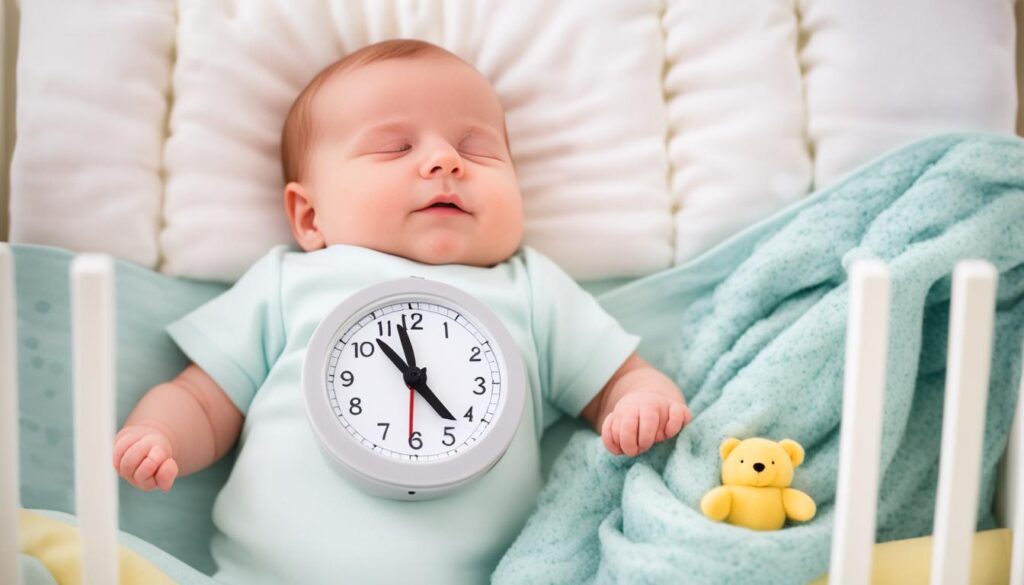
When it comes to helping your baby develop healthy sleep habits, sleep training in the crib can be an effective method. By teaching your baby to fall asleep independently, you can promote better sleep and manage disruptions more effectively. There are several sleep training methods you can try, including:
- The cry-it-out method: This method involves allowing your baby to cry for short periods of time before checking on them, gradually increasing the time between checks.
- The pick-up-put-down method: With this method, you pick up your baby to comfort them when they’re upset and then gently put them back down once they’ve calmed down, repeating the process as needed.
- The fading method: This method involves gradually reducing the amount of assistance you provide to your baby during bedtime routines, allowing them to learn to fall asleep on their own.
It’s important to choose a sleep training method that aligns with your parenting style and your baby’s needs. Consistency and patience are key during the sleep training process. While it can be difficult to hear your baby cry, providing reassurance and comfort when necessary can help them feel safe and secure in the crib. Over time, encourage your baby to fall asleep independently in the crib.
Remember that each baby is unique, and they may respond differently to sleep training. Adapt the approach based on your baby’s temperament and comfort level. With diligence and perseverance, sleep training in the crib can help establish healthy sleep patterns and promote restful nights for both you and your little one.
My experience with sleep training
“Sleep training my baby was a life-changing experience. At first, it was challenging to listen to my baby cry, but with the fading method, we gradually saw improvements in her ability to fall asleep on her own. It required consistency and patience, but it was worth it. Now, she sleeps soundly in her crib, and I can finally get a good night’s rest too!”
Benefits of sleep training in the crib
| Benefits | Description |
|---|---|
| Improved sleep patterns | Sleep training can help your baby establish a consistent sleep routine, leading to better quality and longer durations of sleep. |
| Independence | By teaching your baby to fall asleep independently, they can develop self-soothing skills and feel more confident in their ability to sleep. |
| Reduced nighttime waking | When your baby can fall asleep on their own, they are more likely to settle back to sleep independently when they wake up during the night. |
| Enhanced parent-child bond | As your baby becomes more comfortable sleeping in the crib, you can enjoy a well-rested and more connected relationship during awake times. |
Seeking additional help and support
If you’re struggling to manage your baby’s sleep disruptions or have concerns about their sleep routines, it’s important to seek additional help and support. I understand firsthand how challenging it can be to establish healthy sleep habits for your little one.
One valuable resource you can turn to is your pediatrician. They have the expertise and knowledge to provide personalized guidance and strategies tailored to your baby’s specific needs. Whether it’s addressing sleep regression, soothing techniques, or managing other factors affecting your baby’s sleep, your pediatrician can offer valuable insights and recommendations.
Another option is consulting with a sleep consultant. These professionals specialize in helping families navigate sleep challenges and establishing effective sleep routines. A sleep consultant can assess your baby’s sleep patterns, identify any underlying issues, and create a customized plan to improve their sleep in the crib. They can provide ongoing support and guidance, answering any questions you may have along the way.
Remember, every baby is unique, and finding the right approach to managing sleep disruptions and establishing sleep routines may require expert advice. I encourage you to reach out for support when needed, as it can make a significant difference in your baby’s sleep and your overall well-being.
FAQ
How long should I leave my baby in the crib if they’re not napping?
It is best to limit downtime in the crib to 20-30 minutes before naps and 30 minutes before bedtime to avoid interfering with sleep patterns.
Is it okay to leave a baby alone in the crib?
Yes, allowing your baby some independent playtime in the crib can be beneficial as long as they are not upset. Gauge your baby’s comfort level and avoid excessive downtime in the crib.
How can I understand my baby’s wake windows?
Wake windows refer to the amount of time your baby is awake between naps. Paying attention to your baby’s age, hunger cues, and tiredness levels can help determine the appropriate wake window.
What are some tips for introducing the crib to my baby?
Gradually incorporate daily playtime in the crib for short periods and use positive associations like singing songs or playing games to make the crib a happy place.
Why won’t my baby sleep in the crib?
There can be various reasons, including separation anxiety, teething, illness, or sleep regression. Some babies may also be used to falling asleep in other sleep environments.
How can I help my baby sleep in the crib?
Establish a consistent bedtime routine, create a sleep-friendly environment in the crib, and consider using gentle sleep training methods to encourage your baby to fall asleep independently in the crib.
When should I transition my baby from the crib to a bed?
The transition typically occurs around 2-3 years old when your child outgrows the crib or shows signs of attempting to climb out. Transition gradually and monitor your child’s comfort level.
How can I get my baby to sleep in the crib with patience and practice?
Follow a structured sleep schedule, establish a calm bedtime routine, and create a safe and soothing sleep environment in the crib. Be patient and give your baby time to adapt.
Any tips for getting my baby to sleep in the crib for naps?
Start by giving them the opportunity to fall asleep in the crib at the first nap of the day. Practice a consistent routine and be understanding if they initially resist sleeping in the crib for naps.
How can I transition my baby away from swaddling in the crib?
Start by placing them in the crib without the swaddle at bedtime and gradually remove it for the entire night and during naps. Watch your baby’s readiness and comfort level.
Can I do sleep training in the crib?
Yes, you can use various sleep training methods like the cry-it-out method or the fading method to help your baby learn to fall asleep independently in the crib. Choose an approach that suits your baby’s needs.
What should I do if I need additional help and support?
If you are struggling or have concerns about your baby’s sleep habits, consult with your pediatrician or a sleep consultant who can provide personalized guidance and strategies.

